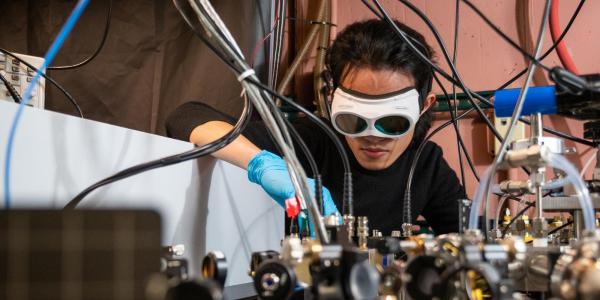


<p>[imagecaption align="none"]</p><p><img alt="Group of researchers posing in front of campus building at CU Boulder" class="image-hero" height="604" src="https://www.colorado.edu/techtransfer/sites/default/files/styles/hero/pu... width="1500" /></p><p>Photo: Cognitive and Affective Neuroscience Lab (CANLab) director Tor Wager and team members</p><p>[/imagecaption]</p><p>The future of pain assessment may be in an app.</p><p>The Cognitive and Affective Neuroscience Lab (CANLab at CU Boulder is betting that a new collaboration with <a href="http://www.cliexa.com/" target="_blank">cliexa</a><a href="http://www.cliexa.com/" target="_blank">, Inc.</a>, a Denver-based startup that develops interactive mobile healthcare technology, will help lead to more effective treatment strategies for the millions of people around the world suffering from chronic pain.</p><p>The partnership leverages cliexa’s mobile technology platform to better track and understand the complex interactions related to pain, emotion and treatment. The mobile app will deliver interactive graphics of emotional health and pain over time to clinicians and care providers while also enhancing patient self-monitoring and self-awareness.</p><p>“The university and the Technology Transfer Office are extremely excited about this partnership as it draws on the strengths and expertise of two organizations working together to study, predict and monitor pain, a complex phenomenon that represents major clinical, social and economic challenges,” said Boulder Technology Transfer Office (TTO) Licensing Manager Dipika Singh, who is working with the CANLab to ensure that products of the partnership become available to those who can benefit most from them.</p><p>According to the National Institutes of Health (NIH), pain affects more Americans than diabetes, heart disease and cancer combined. Understanding the brain pathways that underlie the generation and regulation of pain and emotion is essential to improving outcomes for this large and growing population.</p><p>[imagecaption align="right"]</p><p><img alt="Pavel Goldstein" height="459" src="https://www.colorado.edu/techtransfer/sites/default/files/article-image/... width="350" /></p><p>Pavel Goldstein, Postdoc Researcher (CANLab, Institute of Cognitive Science)</p><p>[/imagecaption]</p><p>Exploring those pathways is also the mission of the CANLab, a CU Boulder research team embedded within CU Boulder’s Institute of Cognitive Science (ICS) and headed by Tor Wager, professor of psychology and neuroscience. When CANLab Postdoctoral Researcher Pavel Goldstein and his team began work on a recent project funded jointly by the NIH and cliexa, the team was confronted with several dilemmas that regularly stymie pain studies. </p><p>Currently, there is no electronic platform that allows people suffering from chronic pain to record and track interactions between pain, emotion and bodily experiences. Additionally, it is problematic to deliver such information to researchers and clinicians who could use it to understand and improve patient health. </p><p>Goldstein said the collaboration will provide “an incredible opportunity to establish a platform for researching chronic pain conditions” and deliver “important feedback to pain patients and clinicians with unique information about patient health.”</p><p>Thanks to the additional teamwork with the <a href="https://www.colorado.edu/techtransfer/">CU Boulder TTO</a>, the CANLab is paving the way for its work with cliexa to benefit patients, clinicians and researchers more broadly. Together, they recently filed a provisional patent for the multidimensional objective pain concept; cliexa’s mobile platform will host the CANLab’s research concept and will be used to further develop CANLab’s existing pain studies.</p><p>CU Boulder and cliexa anticipate the collaboration will result in a novel pain assessment model that could be ready for commercialization as early as 2018. </p>




